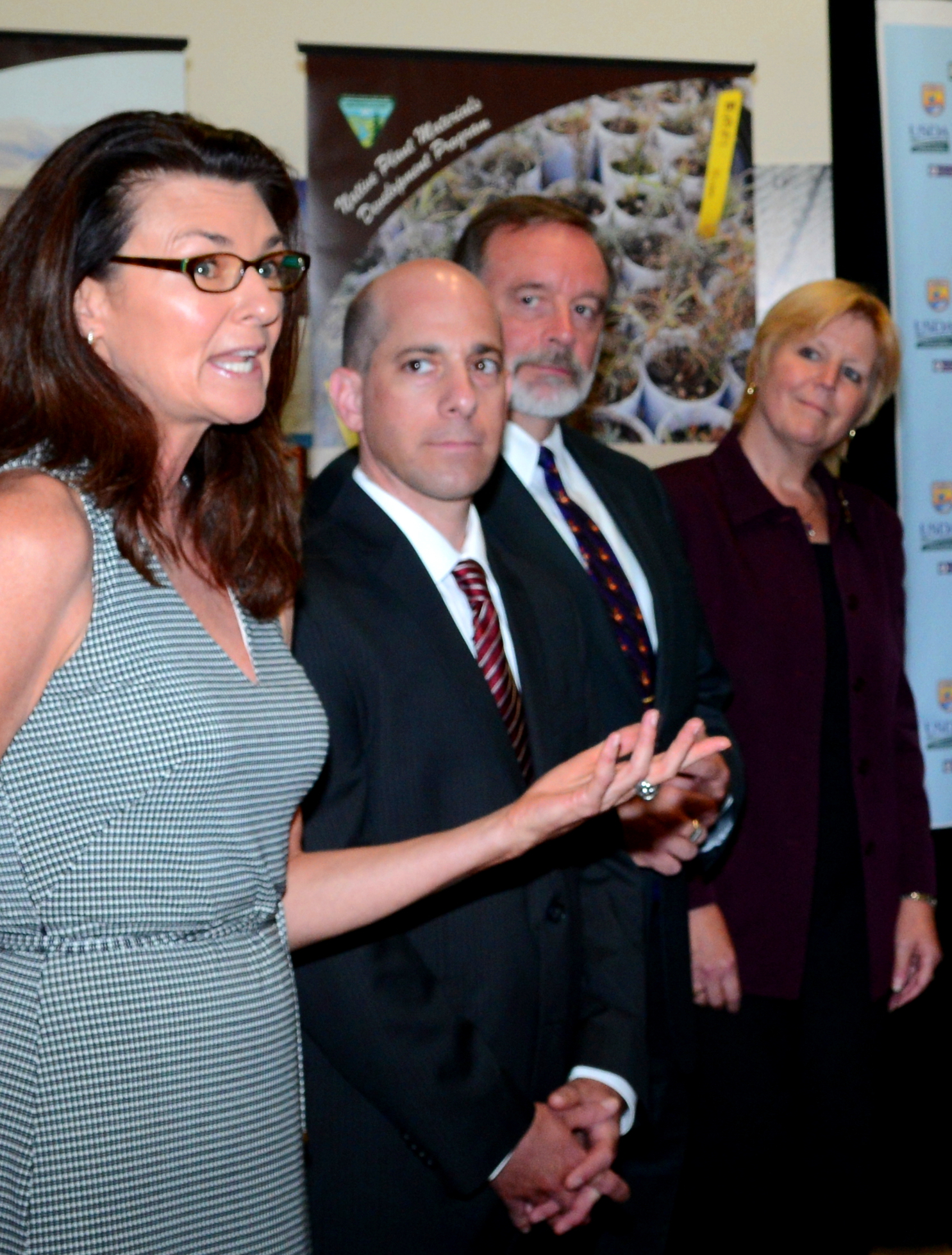 Biodiversity and Disease Outbreaks
Biodiversity and Disease Outbreaks
Chief Scientist Dr. Healy Hamilton led a session in India on a connection between biodiversity and human health at the annual conference of the Global Biodiversity Information Facility (GBIF). She told the audience about a little-known side effect of climate change: as species are forced to move into new habitats that put them into closer contact with human populations, they may take diseases with them. Healy’s research informed health professionals about the likely future movements of animal hosts for these pathogens. The results are illuminating a critical link between climate change and increasing disease outbreaks in humans.
Valuing Biodiversity
NatureServe President & CEO Mary Klein is helping to shift the mindset of six U.S. federal agencies to monitor and report on the vitality of biodiversity. The EPA estimates that the services biodiversity provides are worth $300 billion per year in the U.S., so decisions about land and water use should not be made without incorporating these contributions. In December, Mary and the team will release a framework for agencies to more accurately measure and protect these natural services.
The Shapes of the Earth’s Surface
Another shift in thinking: communities trying to anticipate the local impacts of climate change are thinking more about “geodiversity”—the variety of minerals, rocks, sediments, soils and water that form the surface of the Earth. Geodiversity is one indicator of biodiversity. It also is one of the environmental characteristics that remains stable as climate changes. Mapping geodiversity can help us learn which areas may provide climate refuges for species in the future. Chief Ecologist Pat Comer is among the vanguard of this emerging field of study, having co-authored two papers on how to integrate geodiversity into conservation decision-making. These papers are being published in a special edition of the influential journal Conservation Biology.